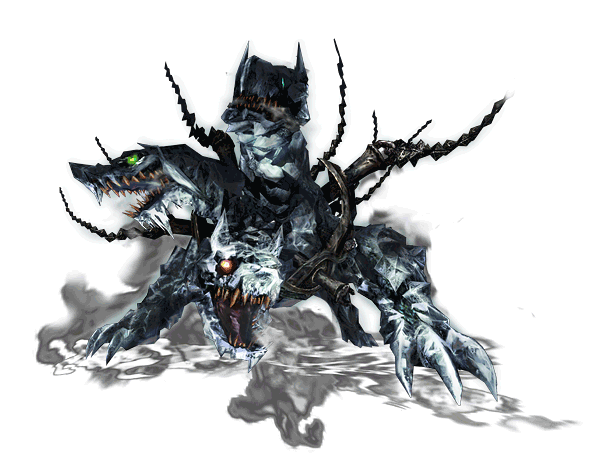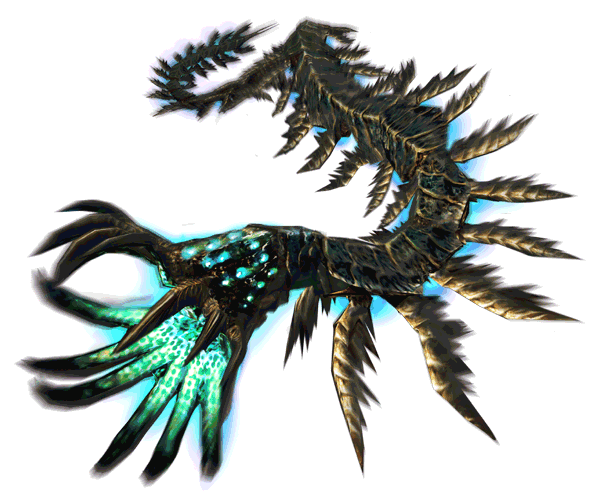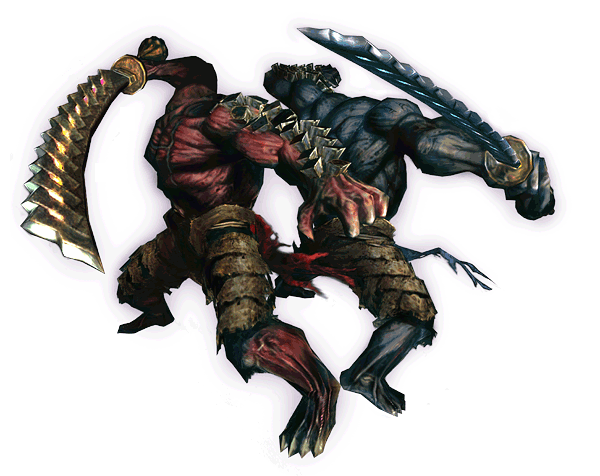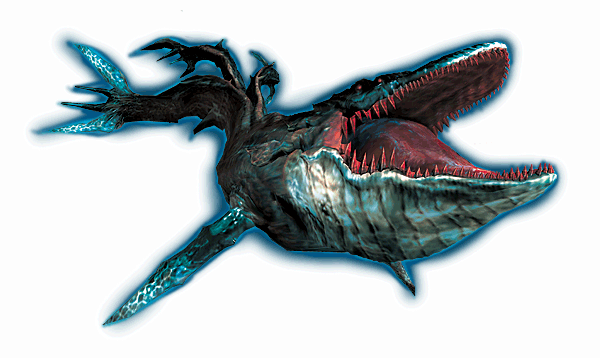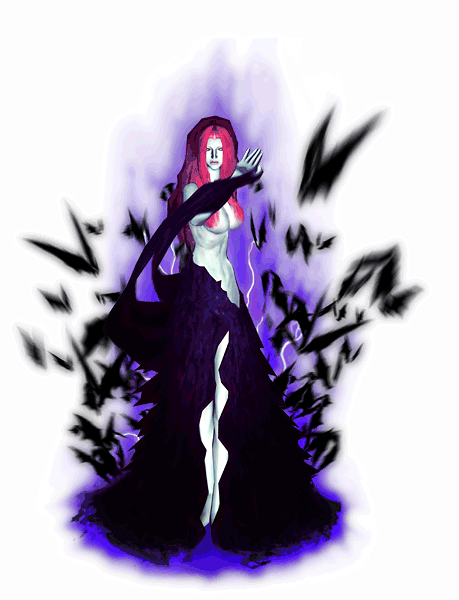This is really more of a critique/analysis of DMC3's pacing rather than me trying to convince the world that DMC3 is the best paced action game of all time (the title is just bait). Of course this is a very subjective opinion and many people will bring up RE4 and Uncharted 2 as great examples of action games with phenomenal pacing. Sure enough those games do have an excellent sense of pacing for an action game but I want to focus my attention on just DMC3 at the moment.
Please note that this is not an analysis of the overall design of DMC3 as a video game, I am just focusing on a very small aspect of the game. There are many things that DMC3 does extremely well that are worth discussing but this is not the time nor place for that.
First of all let's get it out of the way for those who don't know what the hell I am talking about:
What is Devil May Cry 3? DMC3 is the 3rd installment in the action game series Devil May Cry. While it is the 3rd game in the series, chronologically it is the first game in the series. By most account it is an acclaimed and revered action game especially the Special Edition which fixes some of the problems the original had (though for the sake of this analysis I will be using the vanilla version's encounter layout). It can be said that the stylish action genre started with this game rather than DMC1 because of its emphasis on just that... stylish combat above all else. Certainly since the launch of this game, more and more action games have started to have a robust combo system with more emphasis on aerial combat than before. DMC3 is also known for being one of the first action games to introduce motion capture in the cutscenes to push the idea of action not only in game play but in game cinematics as well.
What is pacing? There is a lot of confusion on what pacing actually means when we are talking about pacing in a movie/game/TV series etc. especially in the action genre. When people think pacing they think something that is moving constantly when it's more similar to the word "tempo" as it is used in music. That is to say that the tempo of something changes in a very particular fashion as conducted by the director that evokes a certain emotion.
The general accepted pacing of an action sequence is one where something swells, peaks then subsides. Think of any good action move you know of like a sword swing. It starts up slow, builds up gradually with momentum and then slows down after the initial "hit" which is the recovery. In fighting game terms, these are start up (action swelling), active (peak) and recovery (action subsiding) frames of a move. In the broad sense, a game campaign follows this pattern across its major pivotal points or acts. This pattern is observed multiple times over the coarse of a game, so much so that you can actually graph out the tempo and it would look like a bunch of peaks and valleys.
However, these peaks and valleys are not equal to each other in terms of height and their location on the graph. Usually the first instance of this peak is one of the highest peaks in a game which is the opening of the game. This is why so many action games start off with a bang then slow down after the initial burst of action. It's not until much later that the level of action matches this peak again. After that peak is attained again, if the game has excellent pacing then every major peak after that will reach higher and higher until the final peak of the game which is the climax followed by a giant valley or the resolution.
Now one might come in and say "well why not have a game where the whole game is just balls to the wall action from start to finish"? To that I say... when you are exercising do you sprint at your maximum possible speed for 2 miles? Unless you are super human, you don't do that because it burns you out very fast and you run out of steam quick. A similar thing happens when you try to just bombard the player with action sequences after action sequences in an action game. They get burnt out by the action scenes and after a while the game starts to lose its appeal and even becomes repetitive. Mind you, almost every game is repetitive by nature.. what makes the repetition different among games is how the action sequences are staged and paced. There NEEDS to be down time in between the major action sequences so that players are given time to digest the previous sequence and prep themselves mentally and physically for the next one. Just like a move that looks static in animation looks weak when it's just a fast swing without a proper build up... an action sequence can feel flat when it's jumbled with a previous similarly paced action sequence.
So you are probably wonder what this mythical action graph looks like. Well here it is.
Many of the people reading this have probably seen this before somewhere (or something similar to it). That's probably a perfectly representation of a well paced action game IMO. Starts off strong, eases off then slowly keeps building with each action sequence until the final pay off which is the climax.
Now to kick start my analysis of DMC3's pacing, I will plot out the major points of DMC3's campaign on a graph and where I feel they are situated on the graph in terms of intensity. Obviously
SPOILER WARNING from here out:
Excuse my crude drawings here, I am not as artistically inclined as other people! I have labelled all the major points in the game and where they roughly lie on the graph based on intensity. Of course this is all subjective and some big battles may not appear as grand to others as they are meant to be. But some very obvious patterns are developed in this campaign, very consistently in fact and then changed up slightly near the end to keep the player on edge at the home stretch (more on that later.
Prologue - Mission#1 - Mission#2
The prologue cutscene sets the tone of the story in DMC3. There is a major action scene being played out here that foreshadows what will happen later on in the game. The voice actor sets up the lore of the series immediately.
Prologues continue on with present day with the first scene. The first scene sets up the story and then BAM.. the main character is thrusted into an action sequence and the game is off to a flying start.
There are many things I could say about the reasoning behind the first level. It's a very small, exclusively combat area but it's a necessary one. It makes it clear to the player that this is in fact an action game... there's no running from the enemies and you can't progress until you have killed the enemies. You have to learn how to fight immediately while being prompted with some tutorial messages to make sure you are not completely lost in the action.
After beating mission #1 you are thrusted into yet another action only mission where the action is more intense than before. More enemies spawn with more types and it caps off with a boss fight (which isn't really a boss fight it's a sub boss).
This is the first intensity peak of the game as you are thrust into the action capping off with a pseudo boss fight. It's a very adapt or die type situation here and really makes it clear to you that you are playing an action game.
Mission#3 - Cerberus
The game slows down a bit by having you go through an actual level with escape points against the next group of enemies followed by your first actual non combat area. After that there's a mandatory combat encounter with new enemy types and then soon after that you fight off against your first true boss.
The intensity level is much higher than the first psuedo boss. Cerberus is harder, more ferocious and you need to use more of your arsenal to take it down. It's one of the first skill checks in the game.
Some would argue that the whole mission#1 to mission#3 is one whole action sequence with Cerberus being the first peak of the game. I don't really disagree with that and that is certainly another way to look at it. Nevertheless these first missions delivered the player with relentless action and now is probably the time where the game needs to provide the player with a breather.
Mission#4 and Gigapede
This is the first instance of the action slowing down in the game for a relatively long period of time. The intensity drops down dramatically here but it's actually a very good thing. From here the area expands greatly with multiple rooms to explore and it's not immediately obvious where to go. The level design of this next area is actually quite good and you really need to pay attention as to where you are going. There are a few combat zones here but nothing is at the level seen before.
After some exploring and some key acquisitions you make your way to the final boss of this mission which is an easy boss fight by most account. Straight forward pattern based boss that once you figure out the gimmick, it is a relatively simple fight. This boss is what I like to call a "confidence builder". People usually say that DMC3 has an uneven difficulty curve because it starts out so hard then gets easy then hard again... well my argument is that this is done on purpose for the sake of pacing. Having Cerberus be followed up directly by an even more difficult and intense boss fight would've resulted in many players quitting the game because they would be too burnt out or even scared to proceed forward. Having a relatively easy boss here gives the player confidence and eases them forward to the next major challenge.
It should be noted here that all these down time levels also have an extra use. Since they usually happen after you acquire a major weapon/tool because of a big fight... it gives players some time to experiment with the new tool after acquiring it. That is why once you have acquired everything in the game, it's pretty much non stop boss action from that point on.
Agni and Rudra
Break time is over... time for the next intense battle. A&R is a very difficult boss battle for new players and it's one of those bosses that many players ended up quitting on. It's an aggressive fight because it's 2 against 1. Because this was a major boss battle like against Cerberus, you are awarded with a new weapon for your troubles.
Imagine having this boss fight right after beating Cerberus... many players would've had their confidence shattered even more!
Mission # 6 leading into Mission #7 and the first Vergil encounter- End of Act 1
Time for a breather after Mission #5 and A&R. This is a more puzzle based area where you have to work through the mechanics of the area to get through. There are some combat areas but if you figure out the gimmick of the area you can go through with little combat. Best of all if you complete all the trials you are rewarded with a new weapon!
Mission#7 is another exploration mission but it does feature a couple of new enemy types that by now the player should be able to handle. Once again the player has some of their confidence restored as they make through these next two levels relatively easily. After some exploration and puzzle solving you make your to the next area...
The first Vergil encounter is staged flawlessly. Takes place at the top of the tower you had been progressing through all this time, the tone changes when you encounter him, music and aesthetic are top notch... the game had been building up to this encounter since the prologue cutscene! Even if you don't think the actual battle had the same difficulty as the previous two major boss fights... there's no doubt that in terms of narrative intensity this is the highest the game has reached since the beginning. At this point you are at the edge of your seat, waiting to see what happens next. You want to beat Vergil not just for game play progression reasons but for of story reasons as well.
This first encounter concludes the first act of the game or the first 1/3rd of the game. If you were like most people you couldn't wait to push on but wait....
Mission #8, Leviathan and Mission #9 leading into Nevan
After a ridiculously hype cutscene, you are put into a very anti hype and low action level in the belly of a beast. This is another breather level, the intensity is way down in this and even the boss is just a very non engaging, damage sponge of an opponent. It's another confidence booster. You really can't wait to get out of this level.
Next mission is back to usual level design of the game, after some exploring, puzzle solving and path opening (as well as finding a Spiral on a ledge if you looked hard enough)... you make your way to the next boss. This boss is one of the first bosses in the game who seems to have some lore background with Dante so there's some narrative reasons for this fight which ups the personal stakes involved in the fight. The fight is also not bad, it's challenging in its own right and is more of a pattern recognition boss fight with some interesting mechanics involved. You are again rewarded with a new weapon for this fight.
Mission #10, 11, 12, 13 - Beowulf, Geryon, 2nd Vergil encounter - End of Act 2
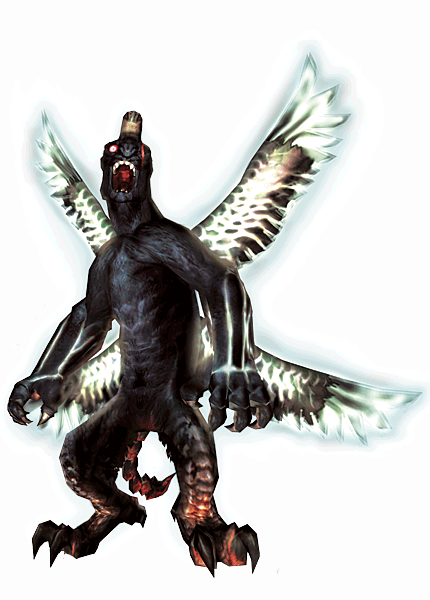

Mission #10 is your standard breather level after Nevan. As you can see this pattern seems to be well established by now and it follows to the tee on what is proper action pacing design. You do some exploration and puzzle solving in this mission to progress. Mission#11 has more complex action sequences including some environment interactions you have to be aware of which increases the challenge of the game. The mission caps off with a very high intensity boss fight in Beowulf who definitely has narrative reasons to be fighting you. Like Vergil this can be considered a rival fight so there is more on the line to fight than just for progression. Fight is challenging for a lot of people, Beowulf is aggressive and has a combination of powerful close attacks and ranged attacks. It's satisfying to beat him however you feel like you are robbed out of acquiring a weapon from beating him! Well this is one of the first curveball the game throws at you as its one of the few instances where a boss flees from you instead of being killed so you don't acquire his stuff.
It may seem strange to group all of these together but there is a reason. The is one of the small exceptions the game makes in terms of pacing. Instead of giving a breather mission after the Beowulf fight.. the player is thrust right back into the action with a very high intensity combat sequence involving a life drain mechanic. Player is forced to kill enemies to survive. This sequence finishes with another relatively challenging boss fight in Geryon which has its own unique mechanics to deal with. During all of this some major story cutscenes are played out involving some twists and betrayals... you would think that the mission after 12 would lower the pace but nah...
See this is where DMC3 takes the player out of their comfort zone. If you were paying attention up to this point, you might have gotten very familiar with the action beats of the game. Level with hard boss fight, level with no boss fight or a very easy boss fight right afterwards to take the pressure off etc. Well now you had to deal with 3 back to back high octane missions with 3 challenging bosses at the end of each along with quite a few story cutscenes that build up the climax at the end of act 2 very nicely.
So the 2nd Vergil encounter... well that was even MORE extraordinary than the first encounter (both in terms of mechanics and narrative)! The stakes were higher this time around and the twist that ended this fight was even more dramatic. The tone of the game changes again after this moment in the game and it concludes the 2nd act of the game, culminating with appearances from all the major characters of the game.
You get the Beowulf weapon soon after you beat Vergil 2 because it was Vergil who had actually killed Beowulf, not Dante. This was a cool touch and was a nice curveball to the standard acquisition of devil arms presented in the game thus far.
Mission # 14 + 15, Lady and Doppelganger

The end of act 2 was the biggest peak of the game since the end of act 1. At this point you should been saying "man I could really use a breather after that sequence". Well you do... only instead of getting one slow mission you get two! This pacing choice was meant to make up for the fact that you ended up tackling 3 action packed missions back to back but this section of the game is arguably among the weakest sections of DMC3 (alongside Mission#8 which interestingly enough also followed an end of act sequence). The backtracking in these two missions also didn't help matters at all plus the tower rotation level design mechanic really hampered the pacing. This section is easily the biggest fall in action pacing for the entire game. You could make the argument that this was deliberate as this section is really the only slow period between act 2 and act 3 as we will soon see, however, if I am being perfectly honest I will say that they could've made these levels more high intensity.
Mission#16 is the point where the action starts to climax all the way until the end of the game but it's done so in a deliberate manner. That is because by the end of Mission#17 you have acquired all the weapons/tools in the game so there is no reason to put in cooldown levels to experiment your new found tools on. You go up against Lady, then you go up against Doppelganger in the next mission (both of which provide you with new tools to play around with), back to back unique boss fights each with their own gimmick and each providing you with a new tool with. After this you descend (or technically ascent) into hell and from here on out.... the action does not let up.
Mission#18, Chess Board, Boss Gauntlet, Arkham, Final Vergil encounter -
The Final Stretch
This is the home stretch of the game. Where most games have you do a victory lap near the end with an on the rails sections... DMC3 has more surprises in store for you. Upon entering hell you are made to face off against the Chess Board, a very unique combat scenario involving a large amount of enemy types. You have to adapt quickly to this new scenario, this could be considered a boss fight by itself.
After you beat this encounter... you are put into a boss gauntlet! But because you have way more tools and moves at your arsenal... the same fights play out much differently. You also have a choice in the matter in terms of who you want to face but the choice is dictated by the relatively difficulty of the boss fights. You can choose to fight 3 of the hardest boss fights in the game (Cerberus, A&R and Beowulf) or you can fight many bosses that are much easier. Either way, this is a challenge you have to overcome to progress and boss gauntlets are rarely easy.
With no breathers in sight... you then move on to the penultimate boss fight in the game which is against Arkham. This boss fight has big narrative implication but it's really nothing more than a gimmick boss fight. It was clearly never meant to be the climactic showdown and if there's any form of victory lap in the game then it would be this boss fight due to the mechanics involved.
And finally... just like all the previous end of act sequences, the final act delivers on the build up. You have to fight Vergil one last time to finish the game once and for all. The emotional stakes are at their peak here, the build up to this moment has been magnanimous. The music that plays during this boss fight is a grand version of the theme that plays throughout the game... you feel in your heart that is really the final encounter of the game and you have to use everything you have learned up to this point to overcome it. And this fight does not disappoint at all... it is everything a final boss fight should be. Very challenging yet at the same time very fair, many would say that this is in fact the hardest boss fight of the game. You couldn't give the game a better climactic finish than this (could've picked a better spot to fight in though... LOL!).
The End... or is it?
The final boss fight is over, your hands are shaking, you feel satisfied with what has transpired. You have lost count of how many hours you have spent on the game, how many times you died, how many enemies you killed. Vergil's final word as you land the final blow on him echo in your mind long after the moment has passed. You are left with a bittersweet sensation... the game was great but was that actually the last time you get to fight off against Vergil, an adversary you had worked so hard to defeat all this time?
You are ready to put the controller down after you see Dante shed a tear for his brother... but then you see Dante saying "I am absolutely crazy about it!" and realize.... it's not over 'till its over! During the credits there is an actual combat sequence you can play which has you fighting a hundred demons finishing off with a Hell Vanguard fight! Absolutely brilliant stuff... as if the game needed anymore convincing that it is in fact an action game, you are given a chance to fight during the credits. Safe to say these are some of the most action packed credits you have witnessed. If you beat the whole encounter in the allotted time you are treated to a secret cutscene involving Vergil! The game ends for real after that and everything comes back full circle, wrapping it all in a nice bow.
Even the credits fit right into what the game is about. From the first input you do in the game to the last one... it's all about stylish action. You feel like you have played an action epic, even forgetting that the game had a lot of down times in the middle that built up to the next major action sequence which you remember fondly. You remember the major end of act moments as that was the main point of the game both mechanically and thematically. And it's all thanks to how the game was framed and paced along with how well the game actually played.





